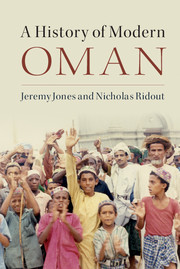Introduction
Published online by Cambridge University Press: 05 September 2015
Summary
What is modern Oman? Today, Oman looks and feels like most people's idea of a modern country. This is particularly true in the capital city, Muscat, with its busy freeways and malls full of the latest consumer goods, and its high levels of Internet penetration and smartphone use, which are evident to even the casual observer. But at the same time Oman today retains many features that might be considered typical of distinctly premodern or traditional society. It is ruled by a hereditary monarchy, everyday social life involves widespread religious observance, ‘traditional’ conceptions of the family are a powerful influence on the decisions made by individual Omanis, and even in the capital city, Omani men and women wear what most observers would instantly recognise as ‘traditional’ dress.
Most Omanis, too, probably think that it is the freeways and the technology, along with some of the more striking achievements of the contemporary state – the comprehensive welfare system and public education – that make their country modern. That is to say, they identify as modern those things in which Oman resembles countries whose economies and social systems are the result of a process of industrialisation that began, typically, in Europe and the United States in the nineteenth century. To call Oman modern in this sense, and to contrast its modern and traditional elements in this way, then, is to imply a process of linear development, to suggest a narrative of progress from a ‘backward’ or ‘underdeveloped’ state towards the achievement of a recognisable condition of modernity. This is a perspective shared by many Western accounts of Oman's history, and it is also the dominant commonsense Omani understanding of that history, often reinforced by the present government's own narrative of national ‘renaissance’ and economic development since 1970.
The reality is a little more complex. The achievement of the visible and commonsense modernity so evident in Oman today has indeed been quite remarkable. The familiar story of a country that was considered ‘medieval’ in its social arrangements and lack of infrastructure (paved roads, schools, hospitals and so on) in the mid-twentieth century, but which was transformed through the investment of oil revenues after 1970 into the self-evidently ‘developed’ nation of 2015, is, in many respects, entirely true. But it leaves out two complications.
- Type
- Chapter
- Information
- A History of Modern Oman , pp. 1 - 20Publisher: Cambridge University PressPrint publication year: 2015

